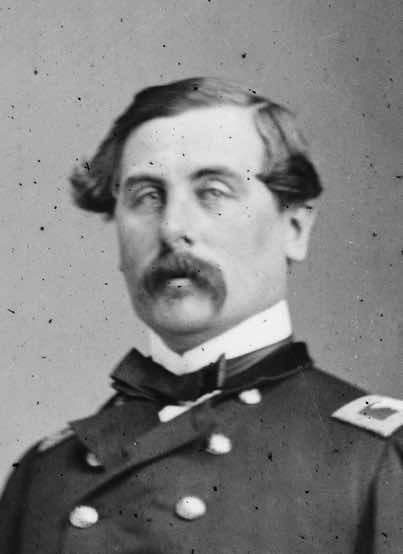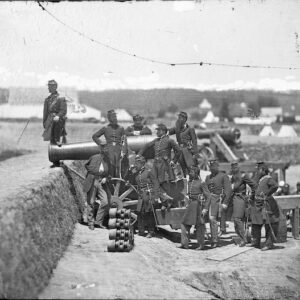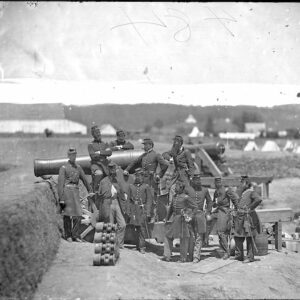Tag: Meagher (Thomas F.)
 Wikipedia says: Thomas Francis Meagher (3 August 1823 – 1 July 1867) was an Irish nationalist and leader of the Young Irelanders in the Rebellion of 1848. After being convicted of sedition, he was first sentenced to death, but received transportation for life to Van Diemen’s Land (now Tasmania) in Australia.
Wikipedia says: Thomas Francis Meagher (3 August 1823 – 1 July 1867) was an Irish nationalist and leader of the Young Irelanders in the Rebellion of 1848. After being convicted of sedition, he was first sentenced to death, but received transportation for life to Van Diemen’s Land (now Tasmania) in Australia.
In 1852, Meagher escaped and made his way to the United States, where he settled in New York City. He studied law, worked as a journalist, and traveled to present lectures on the Irish cause. He married for a second time in New York. At the beginning of the American Civil War, Meagher joined the U.S. Army and rose to the rank of brigadier general. He was most notable for recruiting and leading the Irish Brigade, and encouraging support among Irish immigrants for the Union. By his first marriage in Ireland, he had one surviving son; the two never met.
Following the Civil War, Meagher was appointed Montana’s Territorial Secretary of State by President Andrew Johnson, and served as acting territorial governor. In 1867, Meagher drowned in the Missouri River after falling from a steamboat at Fort Benton. The cause of his fall is disputed by historians, with varying hypotheses including weakness from dysentery, intoxication, suicide, and murder. A 2016 analysis by Timothy Egan, in The Immortal Irishman, suggested Meagher may have been murdered by Montana political opponents.
…Meagher’s decision to serve the Union was not a simple one; before the onset of the war, he had supported the South. He had visited the South to lecture, and was sympathetic to its people. Further, his Irish friend John Mitchel, who had settled in the South, supported the secessionists. Meagher and Mitchel split over the issue of slavery. Mitchel went to the Confederate capitol in Richmond, Virginia, and his three sons served with the Confederate States Army.
On 12 April 1861, the first shots were fired at U.S.-held Fort Sumter in Charleston Harbor, South Carolina. This action by the South pushed Meagher into support of the Union cause.
He began recruiting men for the Union Army. One of his ads in the New York Daily Tribune read: “One hundred young Irishman—healthy, intelligent and active—wanted at once to form a Company under command of Thomas Francis Meagher.” On April 29, his recruits were enlisted as Company K of the 69th Infantry Regiment of the New York State Militia (the “Fighting 69th”). Under the command of Colonel Michael Corcoran, another leading Irish political figure, the 69th fought in the First Battle of Bull Run, a Confederate victory. Corcoran was captured, and Meagher succeeded him as colonel.
After Bull Run, Meagher returned to New York to form the Irish Brigade. In lectures, including a famous speech made at the Boston Music Hall in September 1861, he implored the Irish of the North to defend the Union. He was commissioned brigadier general (effective 3 February) to lead the Brigade in the Peninsula Campaign of 1862.
At the Battle of Fair Oaks in May, Meagher first led the Brigade in battle. The Union won a defensive victory, and the Irish Brigade furthered their reputation as fierce fighters.
This reputation was solidified when the New York printmaker Currier and Ives published a lithograph depicting Meagher on horseback, leading his brigade in a bayonet charge. Following the Battle of Fair Oaks, Meagher was given command of a non-Irish regiment. This experiment was unsuccessful, and thereafter Meagher would command only Irishmen. Meagher’s troops fought at the Battle of Gaines’ Mill on 27 June. The Irish Brigade arrived in battle after a quick march through the Chickahominy River, as reinforcements for the weakening V Corps. Later, this march and battle were considered by historians as the highlight of Meagher’s military career.
The Irish Brigade suffered huge losses at the Battle of Antietam that fall. Meagher’s brigade led an attack at Antietam on September 17 against the Sunken Road (later referred to as “Bloody Lane”) and lost 540 men to heavy volleys before being ordered to withdraw. During the battle, Meagher was injured when he fell off his horse. Some reports said Meagher had been drunk, but Maj. Gen. George B. McClellan’s official report noted that Meagher’s horse had been shot. Meagher had faced reports of drunkenness at the First Battle of Bull Run. The high number of casualties at Antietam, and the rumors of his being drunk on the battlefield, increased criticism of Meagher’s command ability.
The Irish Brigade suffered its largest losses at the Battle of Fredericksburg. Brigade chaplain Father William Corby later said it was “a body of about 4,000 Catholic men marching – most of them – to death.” Meagher led 1,200 men into battle, and “two hundred and eighty men only appeared under arms to represent the Irish Brigade” the next morning. Meagher took no direct part in this battle, remaining at the rear when his brigade began their advance, due to, what he described in his official report as ‘a most painful ulcer in the knee joint’.
Meagher spent the next four months recovering from his injuries, and resumed his command three days prior to the Battle of Chancellorsville. After limited engagement at Chancellorsville, Meagher resigned his commission on 14 May 1863. The Army had refused his request to return to New York to raise reinforcements for his battered brigade. The brigade was 4,000 strong in mid–May 1862, but by late May 1863, it had only a few hundred combat-ready men left.
Meagher’s fellow Irish leader, Col. Corcoran, had been exchanged and promoted Brigadier General, but he died in December 1863. So the Army rescinded Meagher’s resignation on 23 December. He was assigned to duty in the Western Theater beginning in September 1864. He commanded the District of Etowah in the Department of the Cumberland from 29 November to 5 January 1865. Meagher briefly commanded a provisional division in the Army of the Ohio (9–25 February); he resigned from the Army on May 15.
Showing all 2 results

